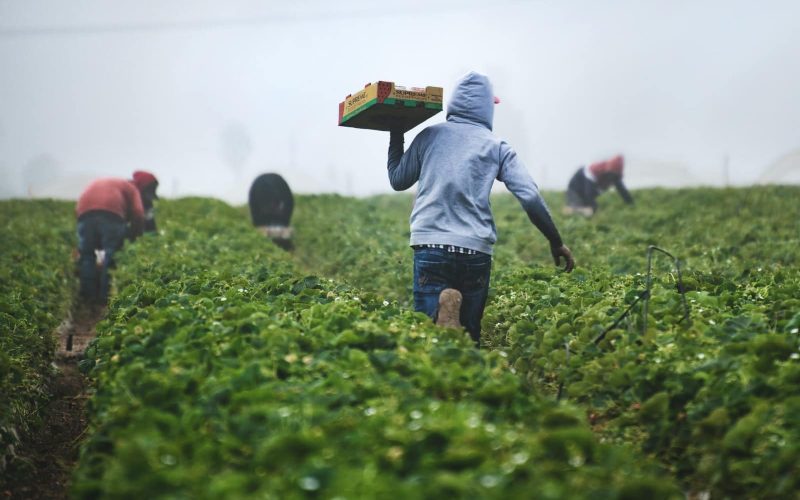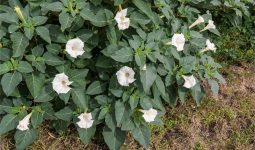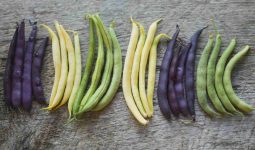This article is a guide to the different types of farming. Farming is an ancient practice that used various techniques to raise multiple crops and animals.
Also, Farming aims to produce agricultural products, such as various food crops, to feed the world’s ever-increasing population.
Farming practices have changed dramatically over time to meet the needs of the time and include technological advancements.
The following page presents a complete overview of the numerous agricultural practices currently used worldwide.
Read on as we discuss some of our different farming types.
1. Arable Farming
Arable farming is a type of agriculture that focuses on growing crops in areas with a warm environment throughout the year.
This approach is commonly used on flat ground or mild slopes, but the soil must be exceptionally fertile and deep to be effective. For arable farming methods to succeed, the land must be neither exceedingly dry nor highly moist.
It is preferable that the land used to cultivate crops using arable farming be well-sheltered and have adequate space to accommodate various machines.
2. Pastoral Farming
Pastoral farming is one type of farming commonly used in damp or cold locations where crops cannot grow.
Animals are raised on steep hills instead of crops, and the income comes from meats, furs, and other secondary goods like milk and butter.
Because these soil conditions only allow grasses and heather to grow, this is an excellent approach to using lands with low fertility.
It’s also been observed that places with steep slopes frequently experience strong gusts, making cultivating crops even more difficult.
Furthermore, sheep and goats, for example, can easily be reared in these conditions since they can feed on the grasses growing along the hillsides. This is one of the different types of farming.
3. Mixed Farming
In mixed farming, crops and animals are cultivated simultaneously on the same piece of land to improve efficiency.
The most acceptable arable and pastoral farming practices are used to increase a farm’s productivity. Farmers’ risks of being harmed by inclement weather decreased because of diversified agricultural systems.
Furthermore, there is also a symbiotic link between the crops and the animals on the farm. The farmer can use the excrement produced by the animals as a natural fertilizer. Increasing their yield without cutting into their profits.
4. Commercial Farming
Commercial farming is a large-scale farming approach that is primarily focused on raising crops for the goal of profit.
Animals and vegetables are grown on a huge scale with the assistance of machinery and technology to maximize productivity. Monoculture is a technique that is frequently used in commercial farming.
This strategy entails concentrating on a single cash crop, such as coffee or cotton, to increase profit margins. This is one of the different types of farming.
5. Subsistence Farming
Not all farming is done on a huge scale to create marketable items. In the case of subsistence farming, all farming activities are carried out solely for personal use.
This is a labor-intensive, small-scale farming approach pursued only by the farmer and his family for self-consumption. It is primarily focused on increasing self-sufficiency and rarely involves using current technology or high-tech machinery.
6. Extensive And Intensive Farming
Extensive and intensive farming are two strategies focused on increasing output and yield. Land tillage is used in extensive farming to help boost the farm’s overall output.
Farmers grow the land size to immediately improve the product without affecting other farming aspects.
However, intensive agriculture entails increasing the amount of capital and labor used in farming activities to increase yields over time. This usually boosts food and crop production to formalize drought-resistant crops.
7. Sedentary Farming
On the other hand, sedentary farming is the polar opposite of nomadic agriculture—farmers who use this method often till the same area for several years.
The sedentary agricultural approach dates back to 10,000 BC and is said to have originated in parts of Eurasia and the Americas.
8. Nomadic Farming
Like our forefathers, who initially conducted animal husbandry, Nomadic farming entails migrating animals from one site to another to pursue plentiful water and pastures.
Like pastoral farming, nomadic farming takes place in dry and semi-arid lands to make the most of the harsh conditions.
9. Poultry Farming
Poultry farming involves raising birds for meat and eggs, such as chickens, turkeys, and ducks.
According to the USDA, poultry farming is a crucial subset of agriculture worldwide, accounting for roughly 18 percent of all U.S. exports.
The main benefit of a poultry farm is that it may be operated in small or large sizes, according to the farmer’s preferences.
However, recent trends are shifting the business toward producing chicken raised on natural pastures to lessen animal cruelty.
Chicken farming uses fewer resources than other animals. Hence it has become popular in urban farming. This is one of the different types of farming.
10. Apiary
Apiary farming refers to keeping bees in a small space to produce significant amounts of honey.
Apiaries can be made by enthusiasts who want to have honey. However, in most cases, they are established for commercial agriculture, research, or education.
One of the most significant advantages of establishing a large apiary is relocating farm sections to more suitable and profitable areas.
Furthermore, this method, also known as mobile beekeeping, makes it extremely simple for farmers to improve their productivity and market presence.
11. Fish Farming
Aquaculture, sometimes known as fish farming, produces various varieties of fish in artificial or natural water bodies such as ponds.
Large tanks are frequently developed for aquaculture. This approach allows farmers to grow massive amounts of fish in any location on the planet.
Moreover, aquaculture is increasingly recognized as a sustainable and environmentally friendly means of producing high-quality proteins to suit the global population’s needs.
12. Dairy Farming
Dairy farms are among the most common types globally. They specialize in the production of milk and other dairy products. Most dairy farms use cows for this reason, although others use goats and sheep.
Because cattle farming is a valuable sector, corporations increasingly establish big dairy farms worldwide to maximize their earnings.
They are also occasionally involved in breeding and rearing their animals, which enables them to maintain the number of their critically endangered animals at a lower cost.
13. Flower Farming
As the name implies, Flower farming is a specific area of land dedicated to cultivating and producing various varieties of cut flowers.
This is done to help a variety of sectors and is especially important for special events like weddings.
Flower farms also include greenhouses and nurseries. Allowing flowers to be cultivated year-round without relying on favorable weather conditions.
14. Hay Farming
A hay farm is explicitly built to grow fodder for livestock. Hay is farmed in all 50 states of the United States. However, the type of grass available varies significantly from one region to the next.
On the other hand, Hay farming necessitates enormous plots of land, with a minimum requirement of 10 acres.
Harvesting, packaging, and transporting the hay also requires the employment of various types of machinery, such as rakers, balers, mowers, and tractors.
Furthermore, the hay is frequently packaged into little bales. Rectangular bales, or gigantic round bales, each of which necessitates its own set of machinery.
The moisture content of these bales must be monitored frequently. As there is a risk of mold growth and poisoning the produce.








